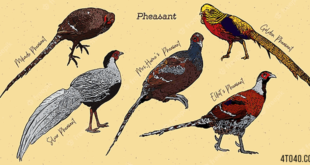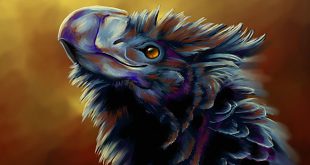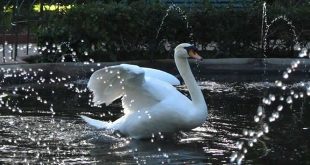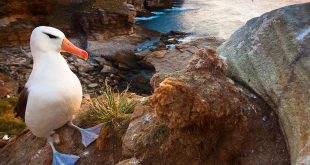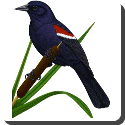 Blackbird — The Blackbird, Common Blackbird or Eurasian Blackbird (Turdus merula) is a species of true thrush which breeds in Europe, Asia, and North Africa, and has been introduced to Australia and New Zealand. It has a number of subspecies across its large range; a few of the Asian subspecies are sometimes considered as full species. Depending on latitude, the Blackbird may be resident, partially migratory or fully migratory.
Blackbird — The Blackbird, Common Blackbird or Eurasian Blackbird (Turdus merula) is a species of true thrush which breeds in Europe, Asia, and North Africa, and has been introduced to Australia and New Zealand. It has a number of subspecies across its large range; a few of the Asian subspecies are sometimes considered as full species. Depending on latitude, the Blackbird may be resident, partially migratory or fully migratory.
The male of the nominate subspecies, which is found throughout most of Europe, is all black except for a yellow eye-ring and bill and has a wide range of vocalisations; the adult female and juvenile have mainly brown plumage. This species breeds in woods and gardens, building a neat, mud-lined, cup-shaped nest. It is omnivorous, eating a wide range of insects, earthworms, seeds, berries, and fruits.
Both sexes are territorial on the breeding grounds, with distinctive threat displays, but are more gregarious during migration and in wintering areas. Pairs will stay in their territory throughout the year where the climate is sufficiently temperate. This common species has given rise to a number of literary and cultural references, frequently related to its melodious song.
The Blackbird of the nominate subspecies T. m. merula is 23.5 to 29 centimeters (9.25 to 11.4 in) in length, with a long tail, and weighs 80–125 grammes (2.8 to 4.4 oz). The adult male has glossy black plumage, blackish-brown legs, a yellow eye-ring and an orange-yellow bill. The bill darkens somewhat in winter. The adult female is sooty-brown with a dull yellowish-brownish bill, a brownish-white throat and some weak mottling on the breast. The juvenile is similar to the female, but has pale spots on the upperparts, and the very young juvenile also has a speckled breast. Young birds vary in the shade or brown, with darker birds presumably males. The first year male resembles the adult male, but has a dark bill and weaker eye ring, and its folded wing is brown, rather than black like the body plumage.
The Blackbird breeds in temperate Eurasia, North Africa, the Canary Islands, and South Asia. It has been introduced to Australia and New Zealand. Populations are sedentary in the south and west of the range, although northern birds migrate south as far as northern Africa and tropical Asia in winter. Urban males are more likely to over winter in cooler climes than rural males, an adaptation made feasible by the warmer microclimate and relatively abundant food that allow the birds to establish territories and start reproducing earlier in the year.
Common over most of its range in woodland, the Blackbird has a preference for deciduous trees with dense undergrowth. However, gardens provide the best breeding habitat with up to 7.3 pairs per hectare (nearly three pairs per acre), with woodland typically holding about a tenth of that density, and open and very built-up habitats even less. They are often replaced by the related Ring Ouzel in areas of higher altitude.
This widespread species has occurred as a vagrant in many locations in Eurasia outside its normal range, but records from North America are normally considered to involve escapees, including, for example, the 1971 bird in Quebec. However, a 1994 record from Bonavista, Newfoundland has been accepted as a genuine wild bird, and the species is therefore on the North American list.
The male Blackbird defends its breeding territory, chasing away other males or utilising a “bow and run” threat display. This consists of a short run, the head first being raised and then bowed with the tail dipped simultaneously. If a fight between male Blackbirds does occur it is usually short and the intruder is soon chased away. The female Blackbird is also aggressive in the spring when it competes with other females for a good nesting territory, and although fights are less frequent, they tend to be more violent.
The bill’s appearance is important in the interactions of the Blackbird. The territory-holding male responds more aggressively towards models with orange bills than to those with yellow bills, and reacts least to the brown bill colour typical of the first-year male. The female is, however, relatively indifferent to bill colour, but responds instead to shinier bills.
As long as winter food is available, both the male and female will remain in the territory throughout the year, although occupying different areas. Migrants are more gregarious, traveling in small flocks and feeding in loose groups in the wintering grounds. The flight of migrating birds comprises bursts of rapid wing beats interspersed with level or diving movement, and differs from both the normal fast agile flight of this species and the more dipping action of larger thrushes.
 Kids Portal For Parents India Kids Network
Kids Portal For Parents India Kids Network
